Born in Tehran in 1980, two years after Iran’s revolution and the onset of the Iran-Iraq war, Sameh Khalatbari sees sociopolitical awareness is a given. She remembers the country in positive colors, though she admits that living during a time of unrest shaped an artistic vision of her surroundings.
“If I set aside the darkness of war nights during the first eight years of my life, I grew up in a country rich in history, literature, and culture,” she told 48 Hills.
The significant events unfolding in those years naturally developed in her a strong concern for social and political issues which is now reflected in her work.
“Throughout my life, whether at home with my family, at work, or with friends, political and social problems were constantly on our minds and in our conversations. Even in social gatherings, these issues dominated our discussions,” Khalatbari said.
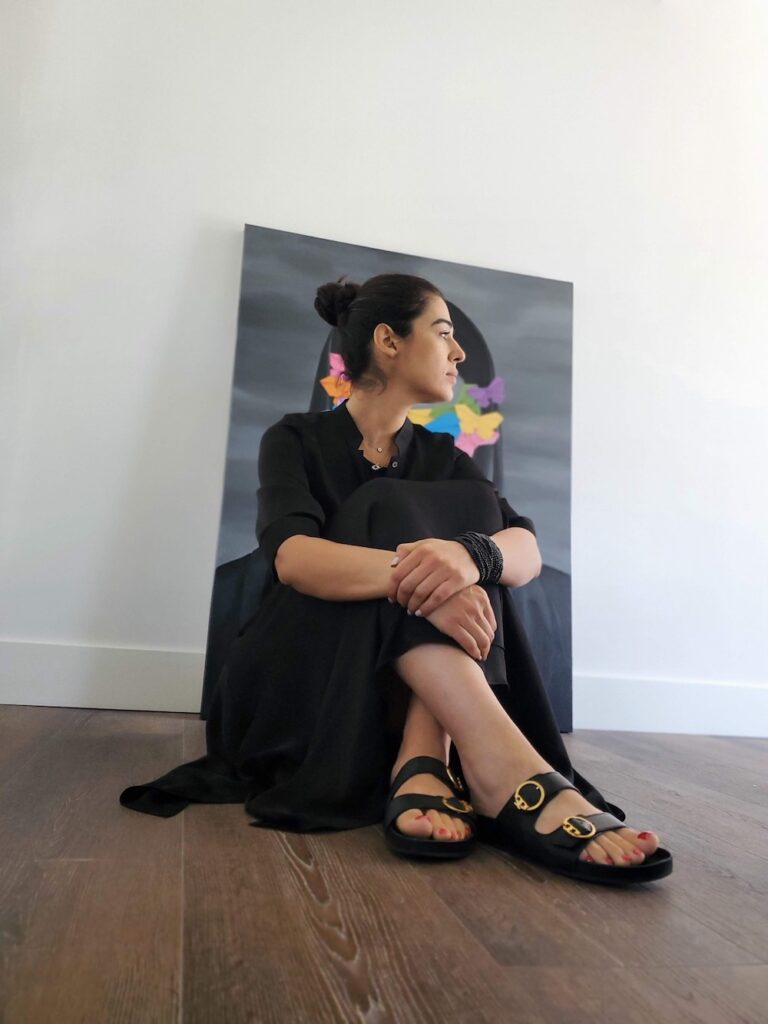
She eventually earned a master’s degree in fine art (University of Art and Architecture, Tehran, Iran, 2013), but it wasn’t easy. Khalatbari says that gaining admission to an art program at university in Iran required passing a highly challenging entrance exam that consisted of two parts: an evaluation of one’s knowledge of art followed by an exam in which candidates are asked to render a drawing or painting of a given subject within four hours.
“When I got my test results, I initially failed, receiving a zero for the drawing section because they said they couldn’t find my drawing. I knew I had done it. After investigation and legal action, it turned out they had misplaced my drawing. They recalculated my grade and I ranked ninth out of 11,000 applicants, and began my classes three weeks later than scheduled,” Khalatbari said.
After graduating, she was granted an O-1B visa, aka the genius visa, as an “Alien of Extraordinary Ability Artist” and moved to the United States, landing in the Bay Area in July 2013. Khalatbari was able to stay with a childhood friend who was living in San Jose, which eased the transition into this new chapter of her life. The artist currently resides in San Ramon with her husband. What she loves most about the Bay Area art community is its diversity.
“You don’t feel like you’re just in the US, you see art from various nationalities and cultures. Throughout the year, you can find different artistic events and shows featuring artists with unique perspectives, visions, styles, and mediums. I believe this characteristic of the Bay Area makes the art community here more fun and inspiring for me,” she said.
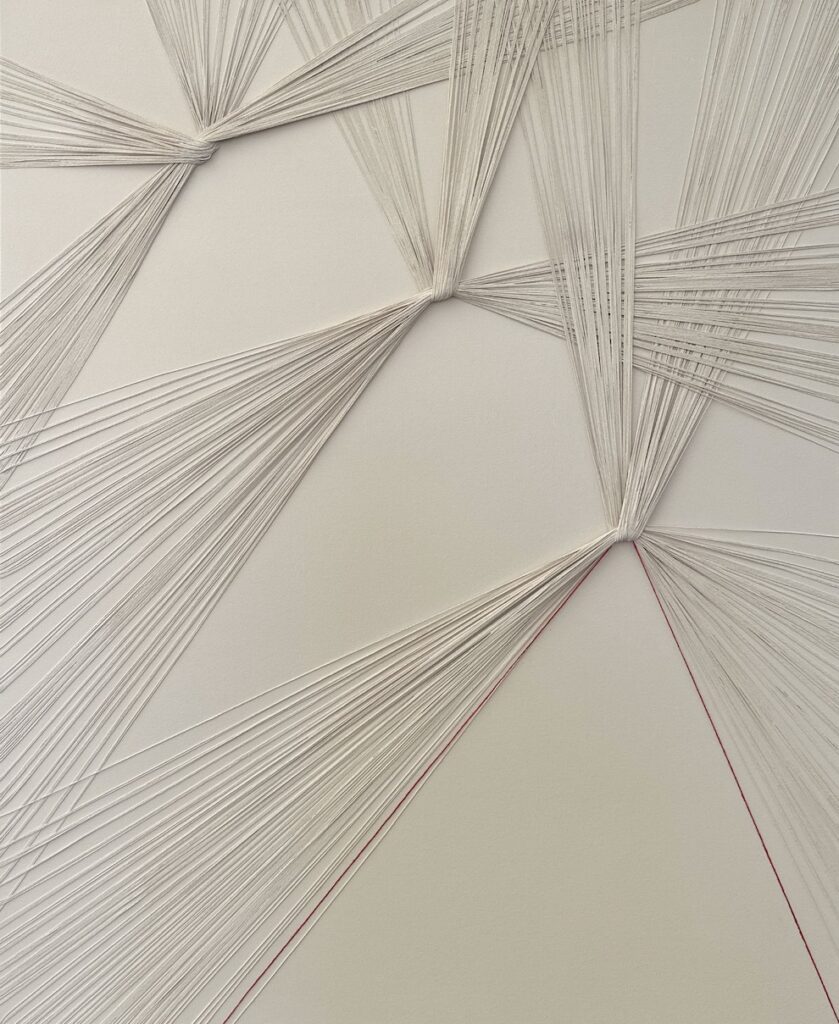
In June 2022, Khalatbari and her husband moved into their first home together, in a neighborhood she describes as filled with nature that is both inspiring and peaceful.
“We’ve filled it with love. After designing my own beautiful studio in our converted garage, it’s where I spend most of my time,” she said.
The space features white walls adorned with two of her favorite artworks, two shelves filled with lots of books in both Farsi and English, and a jar full of colored pencils that her dad gifted her years ago for her birthday. Additionally, a portion of the wall displays cards from her recent shows, artworks, and other information important to her practice.
“These reminders are incredibly encouraging and bring back memories of the days I created those pieces. Typically, I spend about four hours in my studio, working on new projects. Our dog, Berlin, is always by my side, serving as my faithful companion,” she said.
Khalatbari has been an artist since she was seven years old. As a child, drawing was her only source of joy when the lights went out. Since then, she says her art journey has been a rollercoaster of experiences but one in which she feels fortunate to have had amazing teachers who helped shape her along the way. She remembers a particular mentor from her early studies in art who shared an impactful insight with her.
“I was told that, ‘An artist is a mirror of their surroundings and you should reflect them through your art using a creative language.’ This advice deeply influenced my artistic journey. I strongly believe that even a line on the canvas should convey a message. As an artist, I feel responsible for narrating stories and conveying messages through my art,” she said.
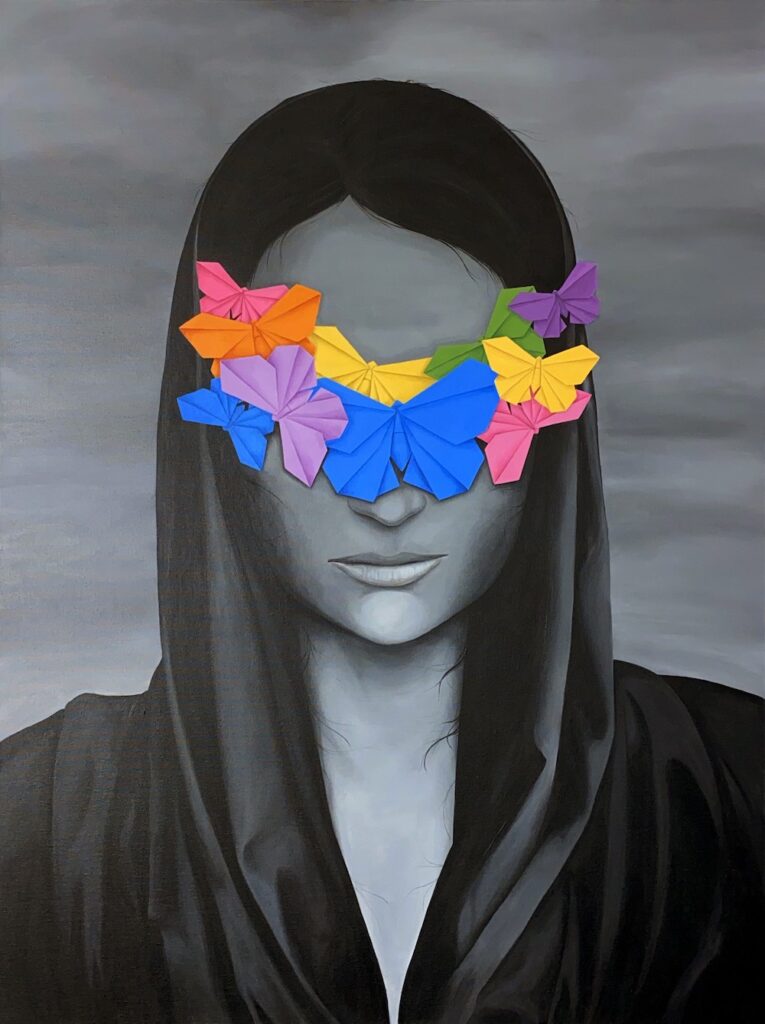
In that way, Khalatbari’s primary subject matter is not just sociopolitical but specific to issues that affect women.
“I was born in a country dealing with revolution and war, so there were already many economic, social, and political issues. As I grew older and ventured into society, I personally encountered these problems. Additionally, as a woman living in a religious country with numerous strict rules against women, I faced social challenges, which were doubly difficult. Living in such environments makes you used to these problems since you don’t know anything different. Consequently, I became more sensitive and thoughtful to these problems,” Khalatbari said.
When she arrived in the United States, she noticed even more how people, especially women from Iran, lacked basic social rights.
“It’s sad but I have to mention that when I came here, I didn’t know how to live freely. So, this made me pay more attention and compare the two societies. The more I delved into these issues, the more deeply I sank into them. I always care about what happens around the world for women and I am more affected by bad news, which I think is because of the environment in which I grew up,” she said.
Aiming to create profound, distinctive, and emotive work, Khalatbari gets down to it daily in her studio, cultivated through a mostly spontaneous process.
“I can tell the process of my work is a little bit unique. When a subject comes to mind and I feel inspired to work on it, I dive right in without testing the medium beforehand. I prefer to begin directly on the final canvas, and interestingly, the outcome tends to be better than when I do a test in advance,” she said.
Midway through the process, she often pauses to hang and view the piece in progress, taking time to ponder its nuances and possibilities.
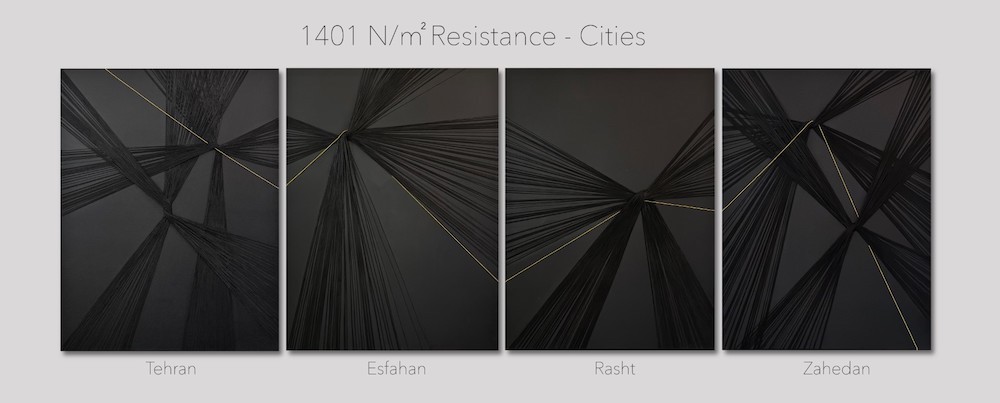
Khalatbari has had the opportunity to share her work in more than 30 art shows around the world, and she says that each one has contributed something unique to her artistic vision.
“When I came to the United States, the art world here was entirely new to me. I had to learn a lot and work hard to understand how things worked. Last year was a turning point in my art career, with the privilege of collaborating with one of the best art galleries in San Francisco, Modernism, where I held two solo shows. It was a significant step forward for me in the art market while providing an amazing experience,” she said.
The first of those two shows, 1401 N/m2 Resistance (which ran from May 18, 2023 to July 1, 2023) was in response to the death of a 22-year-old girl arrested by morality police for not wearing a hijab appropriately, sparking the movement known as Women, Life, Freedom.
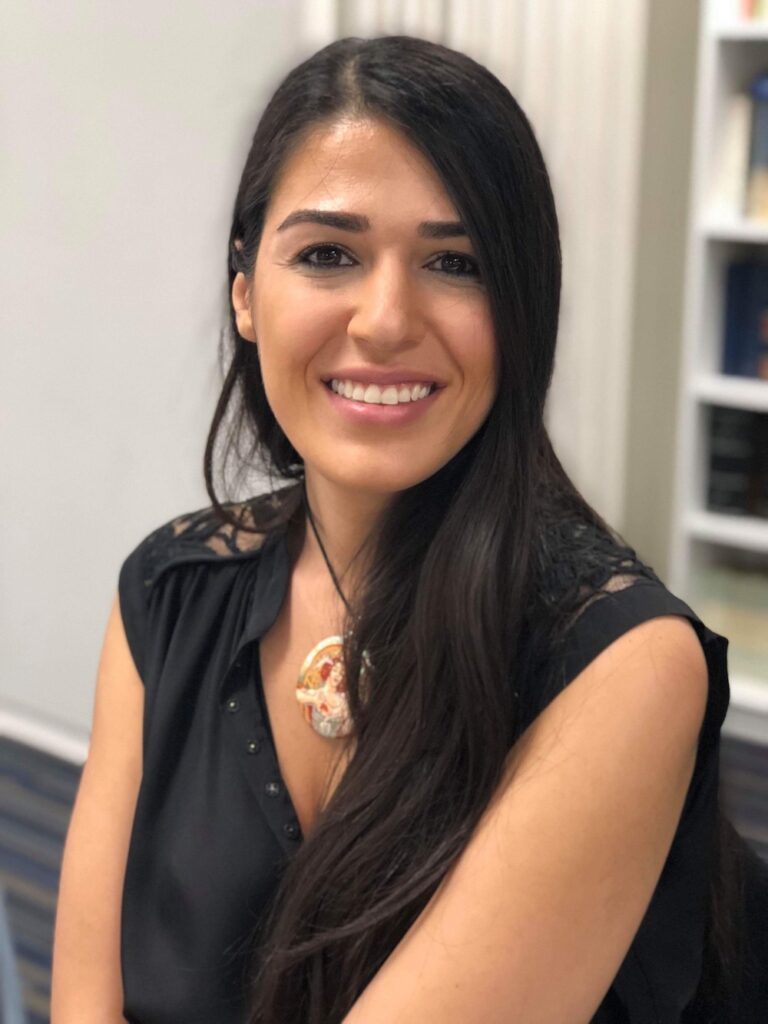
“People, exhausted by severe suppression, took to the streets chanting ‘women, life, freedom’ and unfortunately, many young people were killed or arrested during the protests. Iranians worldwide joined in the protests, shouting the same chant. Everyone was under stress. I wasn’t in Iran at that time, but all of my family was, and I wanted to be a voice for the people there. I created this body of work to represent the suppression of women by Iran’s gender apartheid regime,” Khalatbari said.
Having left Iran at age 33, Khalatbari says she personally experienced discrimination and suppression, and it was time to express it not just verbally but also visually.
“In 1401 N/m2 Resistance, I used natural fiber as the main medium to symbolize the naturalness of the movement, with threats representing women’s hair—a primary target of suppression. Most of the artworks were off-white to show how the faces of women remain calm despite their inner pain,” she said.
Four other artworks were in black, titled after the cities of Tehran, Isfahan, Rash, and Zahedan, where major protests occurred. Khalatbari says her intention was to show how people stand up bravely “to seek the light of hope enlightened in their hearts.” She adds that the feedback from the show was beyond her expectations, giving her a sense that she had successfully conveyed the voice of the Iranian people. Her piece, Surge, from the exhibit was later showcased at the de Young Open 2023.
Her second show with Modernism, Alienation, (runs from October 5 to January 31, 2024), draws from a Persian tradition of painting in which she is trained with depictions of the alienation of humans with the natural world, from each other and, ultimately, from ourselves.
“Alienation showcases the impact of technology, specifically social media, on people’s behavior and interconnection. In the world of the internet, individuals can hide behind a facade and portray themselves as someone they are not … On the opposite end of the spectrum, we have animals, who simply act based on their needs and instincts … Additionally, each animal in different cultures symbolizes positive characteristics that were once part of our own traits but are gradually being lost,” Khalatbari said.
In her newest work, Khalatbari has been influenced by stories of war in various parts of the world and the immense suffering they cause. She hopes that her art’s viewers will form their own interpretations.
“I value the educational and inspiring perspectives that audiences bring to my work. As an artist, it’s fulfilling to hear that viewers understand and resonate with the messages conveyed through my visual language. This feedback boosts my confidence in expressing my artistic vision and intentions. Even if some individuals may interpret my work differently, I still find their perspectives inspiring,” she said.
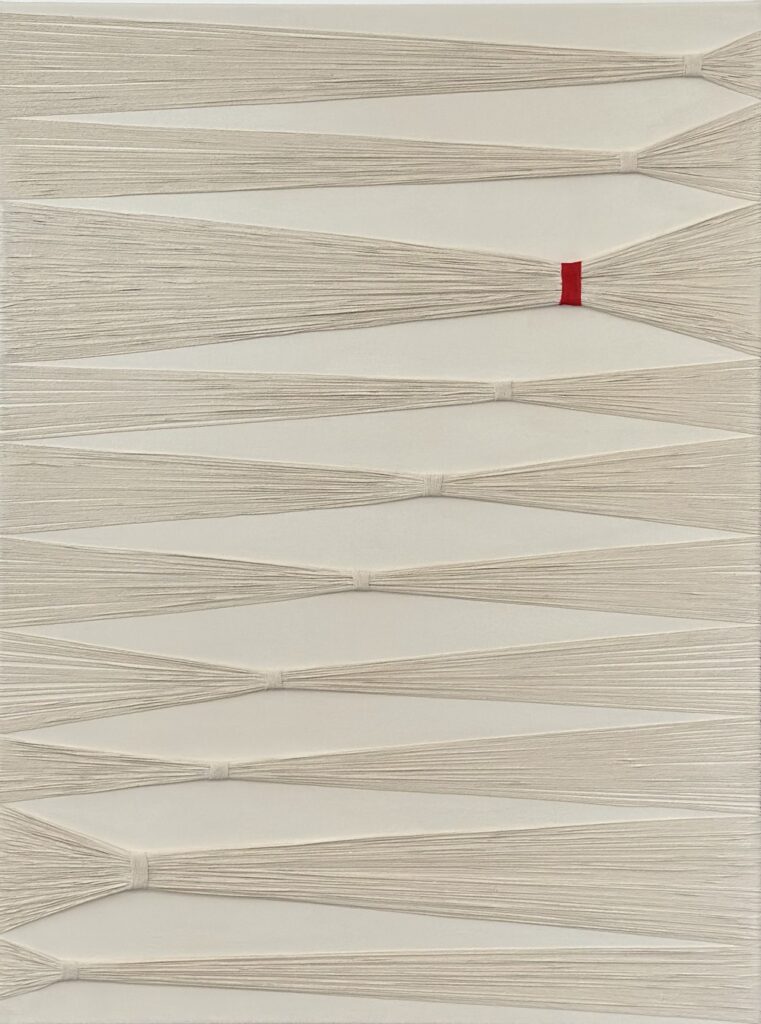
Outside of creating art, she has recently started teaching herself how to play the hang drum, which has a sound that she finds magical. Additionally, she enjoys watching documentaries, reading books in both Farsi and English, and listening to psychological podcasts. She also has a passion for interior design and architecture and occasionally designs and stages homes.
From her recent two career defining exhibitions, Sameh Khalatbari feels that the future holds great promise. In fact, the name Sameh means promise in Farsi. Reflecting on her creative journey, Khalatbari says she recognizes that there’s still a lot more to come, that her path is always evolving and presenting new challenges. She’s eager to continue learning and growing and is excited to see where it takes her next. For others on a similar path, she shares an insight.
“Embrace challenges as opportunities for growth and never stop learning from the world around you. Let your passion and dedication shine through in everything you do, and don’t be afraid to take risks and explore new horizons,” Khalatbari said. “Above all, believe in the power of your creativity to inspire and make a difference, both for yourself and for others.”
For more information, visit her website at samehkhalatbari.com and on Instagram.





